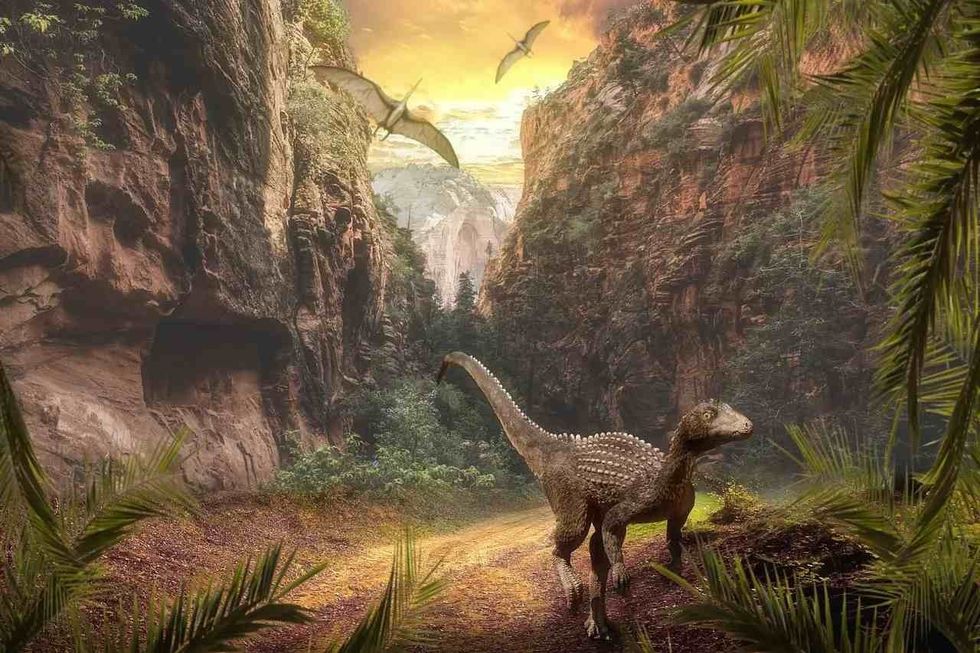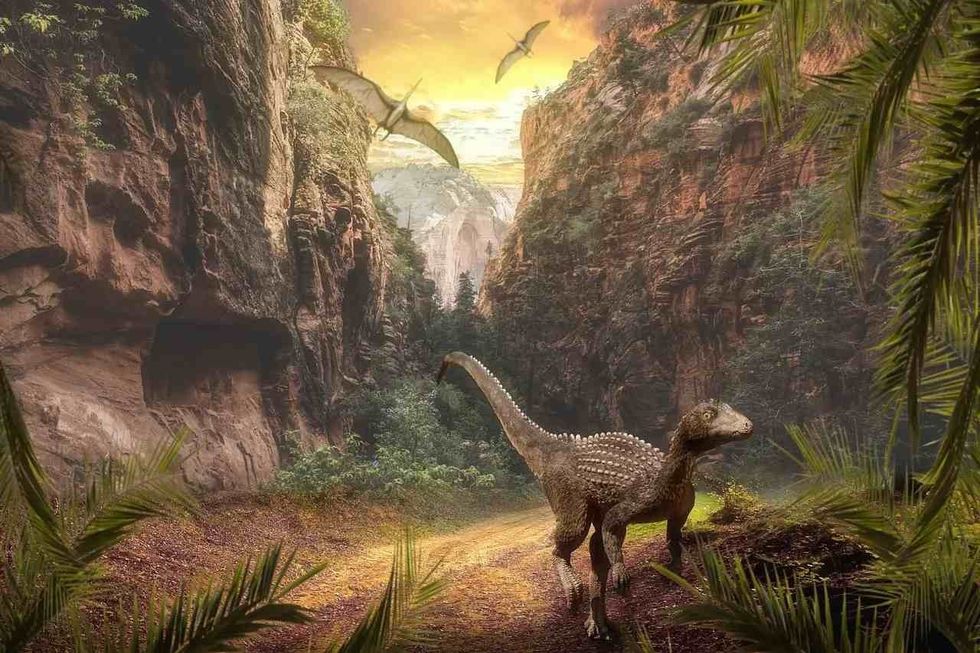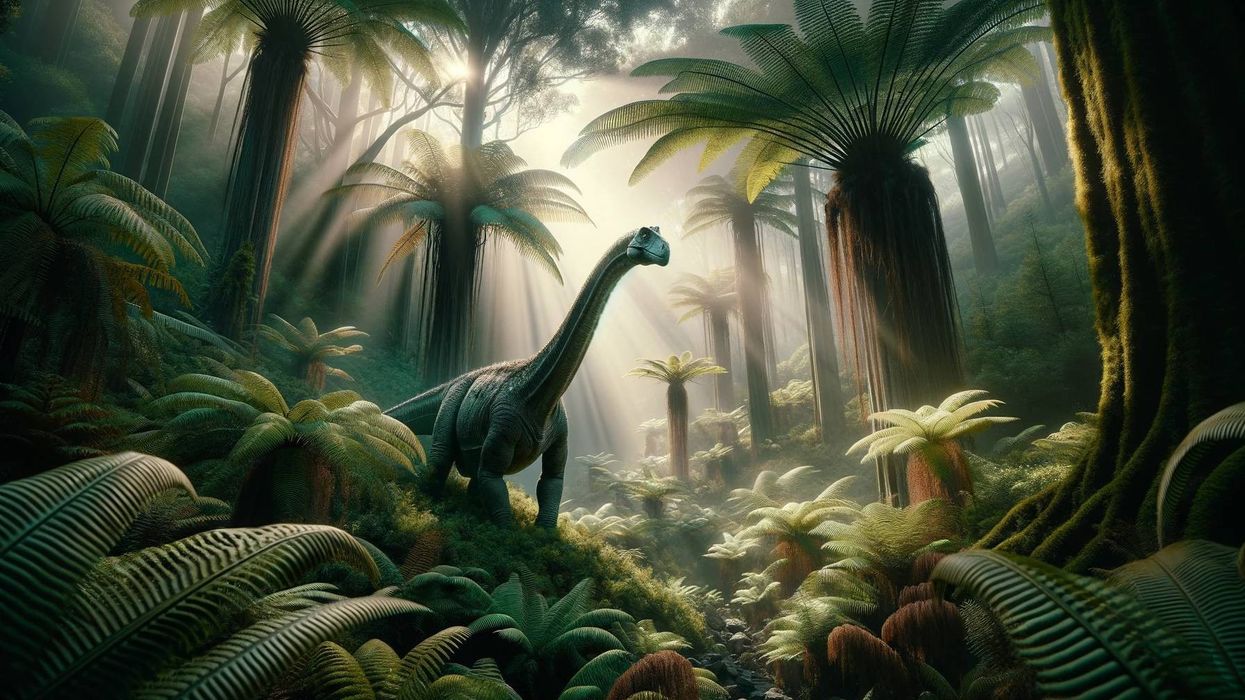If you have watched the 'Jurassic Park' movie and want to know more, you're in the right place.
However, there were some parts of the movies that didn't really reflect the truth. For example, the Tyrannosaurus rex did not appear at this time!
The Jurassic period was truly one of the most fascinating periods in the geological history of Earth and is known through the many fossils that have turned up in archeological surveys through all these years.
The period is known for its many dinosaurs and other reptiles that ruled the land. Furthermore, it was during the Jurassic period that the Earth began to look the way it does in the present day.
Earth used to have a single chunk of land known as the Pangea.
At this time, Pangea started to divide into two masses of land which would further divide and give rise to the continents that we see today. The Jurassic period was therefore very crucial.
The factors that led to scientists being exceptionally interested in the Jurassic period also include the fact that some of the animals and reptiles that lived on Earth during this period can be identified as the ancestors of mammals, birds, and reptiles that roam the Earth in the present day and age.
The Jurassic period is therefore an essential part of the Mesozoic era. It was succeeded by the Cretaceous period and preceded by the Triassic period.
Of these geological periods, the Jurassic period was the second-longest and continued over the span of several million years! If you have watched the movie 'Jurassic Park,' you probably are aware of the fearsome reptiles that roamed the Earth at this time. Keep reading to know more facts about the Jurassic period!
Facts About The Jurassic Period
The Jurassic period has been a matter of interest for many archeologists over the years, which is natural given the amount of light that this period of the Mesozoic era throws on the many mammals and reptiles that lived on Earth millions of years before we humans even came into being.
- The Jurassic period was a part of the Mesozoic era.
- It was preceded and succeeded by the Triassic and Cretaceous periods respectively.
- The is divided into three parts, namely the Early Jurassic, Middle Jurassic, and Late Jurassic.
- Each of these periods can be linked with very specific evolutionary traits that the animals developed.
- This is because the Earth went through major changes during the Jurassic period.
- As we know, the Earth was previously a single mass of land, which was called the Pangea.
- During the Jurassic period, the shifting of tectonic plates to form the many continents that we see on Earth today had started.
- Jurassic period dinosaurs, therefore, had to change and evolve according to the changing landscapes and developed some of the traits that we see in animals today!
- The Jurassic period was quite different from the Triassic period in many ways.
- One of the main ways in which we can differentiate the two periods of the Mesozoic era is through the understanding of their respective climatic conditions.
- During the Triassic period, the climate was largely dry and extremely hot.
- This hampered the existence of many land animals.
- During the Jurassic period, on the other hand, the temperatures still remained scorching hot but the humidity in the air allowed more species of land animals to thrive on Earth.
- This was also facilitated by the division of the continents, as more and more water bodies such as shallow seas started to penetrate into chunks of land along with relief features that arose from the ocean floor.
- The Triassic period is also characterized by apex predators in the form of pseudosuchians.
- These predatory animals would have made it impossible for many dinosaurs to ever come into existence.
- Fossil records show that most pseudosuchians became extinct at the end of the Triassic period, which is the main reason why dinosaurs could ever tread the Earth.
- If the Triassic-Jurassic extinction event hadn't taken place, archeologists suggest that nearly none of the dinosaur species that we know of today would have even come into existence.
- The division of the Jurassic period also saw a rise in sea levels, which definitely changed the way that the climate used to look in most places.
- One of the interesting facts is that the Jurassic period is named after the Jura Mountains in Switzerland.
- This is because the rocks that are found near the Jura Mountains were created during the Jurassic period!
- The Jurassic period is mainly studied by paleontologists using fossils.
Jurassic Period Timeline
The Jurassic period, which is recognized as one with a lot of geological and evolutionary importance, is dated back to millions of years ago. If you ask us, we think it is pretty incredible that the human race's natural history has developed so much!
- The timeline of the Jurassic period spans as long as 56 million years!
- The Jurassic period's timeline can be most accurately described to have lasted from 201.3-145 million years ago!
- The Jurassic period can be divided into three parts, which are the Early, Middle, and Late Jurassic periods.
- The Early Jurassic Period lasted from 201.3-174.1 million years ago.
- The Middle Jurassic Period, on the other hand, lasted from 174.1-163.5 million years ago!
- The Late Jurassic period spanned 163.5-145 million years ago.
- During this time, the animals on Earth went through a lot of evolutionary changes.
- At the same time, Earth also went through changes in the form of major shifts in landscapes and oceans.
- This also created a greater sense of definition between the Triassic and Jurassic periods, due to the changed climatic conditions and the subsequent emergence of newer species of animals on Earth!
- Before the Jurassic period, Earth went through the Triassic period.
- The Jurassic period ended to give rise to the Cretaceous period.
- These three periods, together, formed the Mesozoic era.
- The Jurassic period is said to have ended due to climatic changes and the release of high amounts of carbon dioxide.
- It is said that around 900 dinosaur species lived at this time.
- The Jurassic period cannot be brought back through global warming as it was a period in history.
- Modern-day marine crocodiles are some of the animals whose ancestors lived during the Jurassic period.
Animals And Plants From The Jurassic Period
The Jurassic period, in addition to witnessing the domination of the many types of dinosaurs that existed at this time, is also known for the appearance of the early mammals on Earth!
- Dinosaurs were the dominant land animals during the Jurassic period.
- This period is known as the 'Age of the Reptiles', which cannot be denied since reptiles dominated the land, seas as well as skies at this time.
- The largest animals of the Jurassic period were the sauropods.
- Sauropods were essentially herbivorous dinosaurs and were characterized by long necks, as is evident through the fossils that we hand found over the years.
- The fossils of sauropods such as Diplodocus, Brontosaurus, and Brachiosaurus have been found aplenty and hence, they are some of the best-known dinosaur species of the time.
- The plesiosaurs were marine reptiles that were carnivorous and hence were apex predators of their own realms.
- They had flippers which helped them in moving around freely in their habitat.
- Ichthyosaurs were also found aplenty at this time.
- The Ichthyosaurus is one of the fish-shaped reptiles that is best known to us through fossils.
- This reptile could be found most commonly during the Early Jurassic period.
- The Liopleurodon was one of the most fearsome reptiles of the Middle Jurassic period.
- Some of the early crocodiles or crocodile-like dinosaur fossils that have been retrieved from places in Europe are said to be of a species that can be directly linked with the modern-day crocodiles.
- In fact, some of the earliest species of turtles have also been found in the form of fossils.
- The two types of turtles that turned up were the ones that could pull their heads back into their shells either straight or sideways!
- The ammonites that are found in the fossilized form are some of the most fascinating pieces that remind us of the marine life in the Jurassic period.
- The Archaeopteryx is an old fossil bird of the Late Jurassic period, which was found in the 19th century.
- This proved that the Jurassic period saw the birth of the first birds of the world.
- The first lizards of the world were also born at this time.
- Shrew-like characteristics can be associated with most Jurassic mammals.
- Conifers, such as Araucarian conifers, formed a dominant component of Jurassic floras
Major Events During The Jurassic Period
- It was during the Jurassic period that the tectonic plates started shifting and they eventually caused a separation or division of Pangea into two parts.
- This gave rise to two large continents which would be called Laurasia and Gondwana.
- These two continents then further developed to give birth to what we see the Earth as today.
- Laurasia would divide to form North America, Europe, and Asia.
- On the other hand, Gondwana is divided into two parts, namely the eastern and western parts.
- The eastern part then formed Madagascar, India, Antarctica, and Australia.
- The western part subsequently formed South America and Africa.
- Since the landscape was going through such major changes, even the animals had to evolve according to the need of the hour.
- The shifting of the tectonic plates gave rise to mountains, and parts of some oceans started filling up in between chunks of land.
- The animals had to therefore evolve in order to make sure that they could survive.
- Due to the emergence of mountains all over the many continents, the Jurassic period also saw a major shift in temperatures.
- This was because the emergence of the said mountains had pushed the sea levels to be higher.
- Eventually, the weather became a little more bearable for the animals as it was changed to somewhat subtropical in most places!








